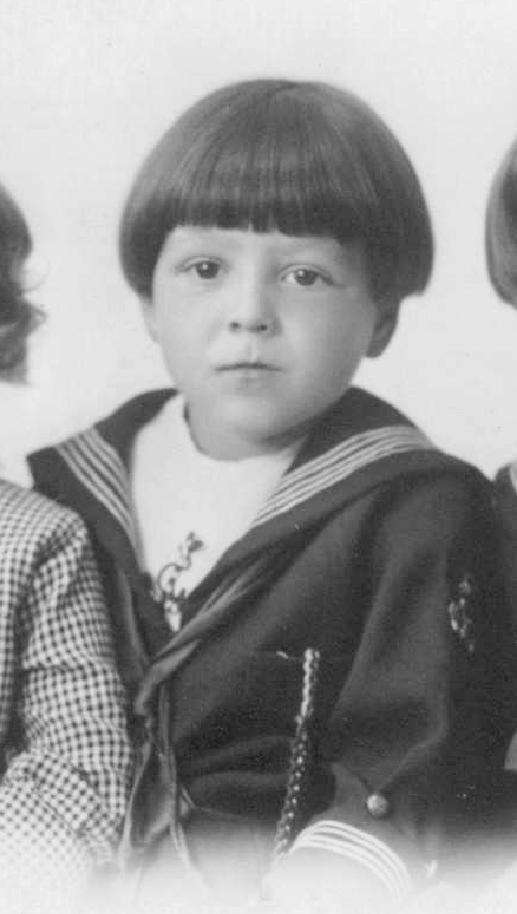
Figure 1.--This Dutch boy was photographed with his brothers about 1910. He has a classic Dutch boy hair cut. |

|
Americans associate bangs with the Dutch. Bangs in America are even reffered to as "Dutch boy bangs". The Dutch tend to call it a "pony", although pagekopje or "page" is also used. I'm not sure how the American expresion of "Dutch boy bangs" developed, but bangs have indeed been worn by Dutch boys. A Dutch reader writes, "I am not satisfied with what it says about the Dutch calling bangs a page boy cut. I checked the terms with friends and dictionaries and here is what I found. Page boy cut ("pagekopje" in Dutch) refers to a style worn by girls and women and refers to bangs in front AND a short cut at the back. You would not normally call a boy's cut a "pagekopje". Although still seen today it was once much more common. We associate it with the Charleston-look of the 1920s. I understand that what Americans all bangs in the above and other pages refers to the front only. This is called a "pony" in Dutch and is used for both boys and girls. Thus a girl might wear braids at the back and bangs in front and we would not call this 'een pagekopje' but 'een pony' and the same word is used for a boy's bangs whatever the style of the hair at the nape of his neck." Some caution has to be given to the word Dutch in America. The word for German in German is "Deutch". Americans confused that with Dutch. Thus the Pennsylvania Germans are commonly referred to as the Pennsylvania Dutch.
Americans associate bangs with the Dutch. Bangs in America are even reffered to as "Dutch boy bangs". The Dutch tend to call it a "pony", although pagekopje or "page" is also used. A Dutch reader writes, "I am not satisfied with what it says about the Dutch calling bangs a page boy cut. I checked the terms with friends and dictionaries and here is what I found. Page boy cut ("pagekopje" in Dutch) refers to a style worn by girls and women and refers to bangs in front AND a short cut at the back. You would not normally call a boy's cut a "pagekopje". Although still seen today it was once much more common. We associate it with the Charleston-look of the 1920s. I understand that what Americans all bangs in the above and other pages refers to the front only. This is called a "pony" in Dutch and is used for both boys and girls. Thus a girl might wear braids at the back and bangs in front and we would not call this 'een pagekopje' but 'een pony' and the same word is used for a boy's bangs whatever the style of the hair at the nape of his neck." A Dutch reader writes, "It is kind of funny that before World War II (1939-45) that the term for bangs ("pagekopje"-- page being the French word for squire) used in the Netherlands often was the German word "Bubikopf" (bubi meaning little boy ). This was, however, only in reference to girls or women who had their hair cut like that."
We have not historical information as to how common bangs were for Dutch boys in the 18th and 19th centuries. Bangs appear to have been a very popular style for Dutch boys in the early 20th century. A Dutch reader, however, has provided some comments on the 20th century. "The comments on the term "pagekopje" above are right in a way. Normally this term is not used for a boys cut. But, when the hair is long over the ears, the term was used in the late 1960s and early 70s, at least in my family. I did wear this style myself and people called it a pagekopje--it did look a bit girlish of course. The short pony was also used too. This style, common, in the first quarter of the century, made a revival in
the late 60s (Beatles-look). When the hair is cut short above the ears the word 'pagekopje' can not be used of course, then it is only a short 'pony'."
I'm not sure how the American expresion of "Dutch boy bangs" developed, but bangs have indeed been worn by Dutch boys. There are other possibilities of course. Illustrations in magazines or popular books might have also given rise to the expression. I am not sure when it first appaered. I think it is also an expression used in Britain, but here am not sure. Some caution has to be given to the word Dutch in America. The word for German in German is "Deutch". Americans confused that with Dutch. Thus the Pennsylvania Germans are commonly referred to as the Pennsylvania Dutch.
A first glance the bangs hair style worn by boys appears relatively standard. We have, however, noticed Dutch boys wearing many different styles of bangs. These variations concern both how the front fringe is cut as well as the length and styling of the hair at the side of the hair is cut. Here they are quite a variety of different styles. We note some of the most elaborate styling is on postcards. We are not sure how to interpret these postcards. The hair syles look fancier tham we have noted in less commercial photographs. The postcards show boys with longer hair at the sides which in some instances has been styled in a variety of often fancy ways.
Navigate the Boys' Historical Clothing hair style pages:
[Return to the Main bangs country page]
[Return to the Main Dutch hair page]
[Return to the Main hair page]
[Long hair]
[Ringlet curls]
[Hair bows]
[Curls]
[Hats and caps]
[Collar bows]
Navigate the Boys' Historical Clothing Web Site:
[Introduction]
[Activities]
[Biographies]
[Chronology]
[Clothing styles]
[Countries]
[Bibliographies]
[Contributions]
[FAQs]
[Glossaries]
[Satellite sites]
[Tools]
[Boys' Clothing Home]
